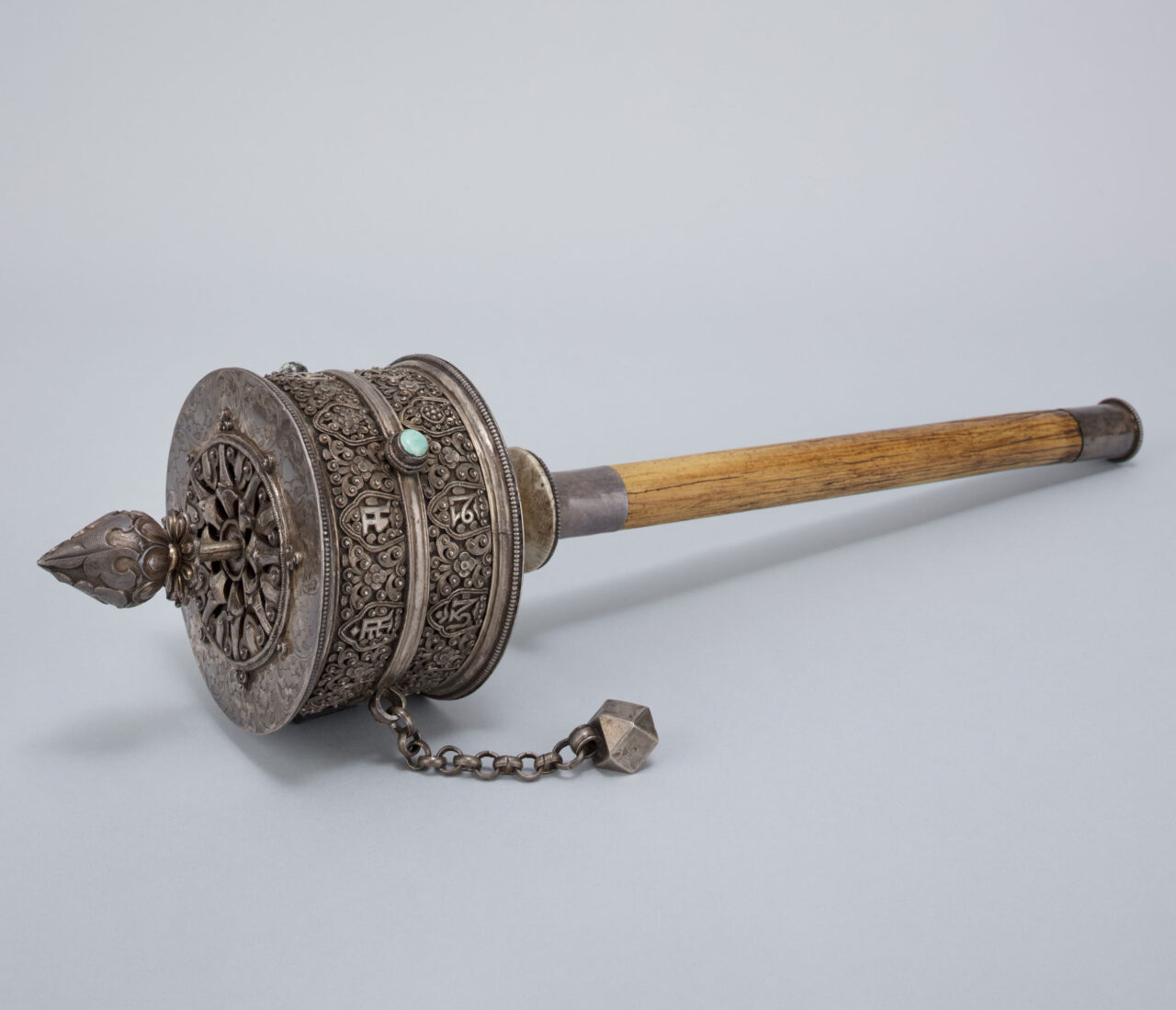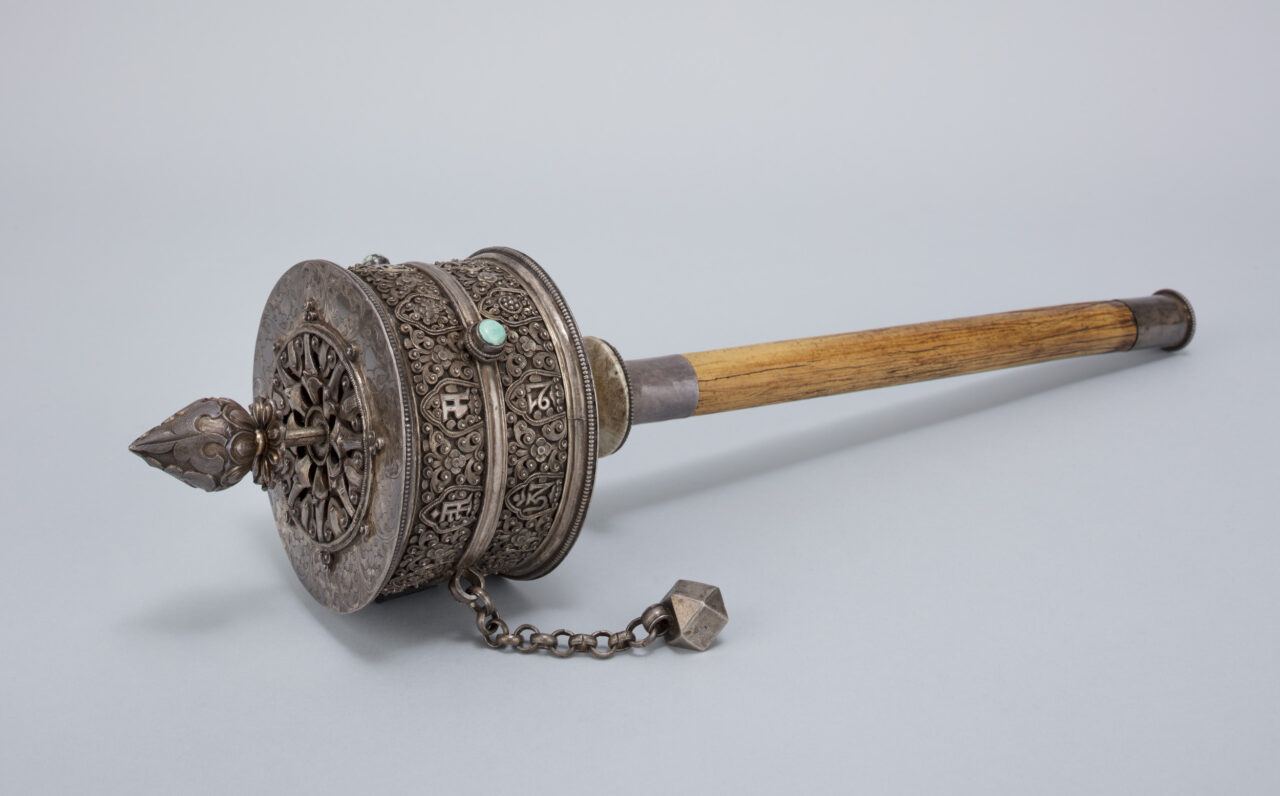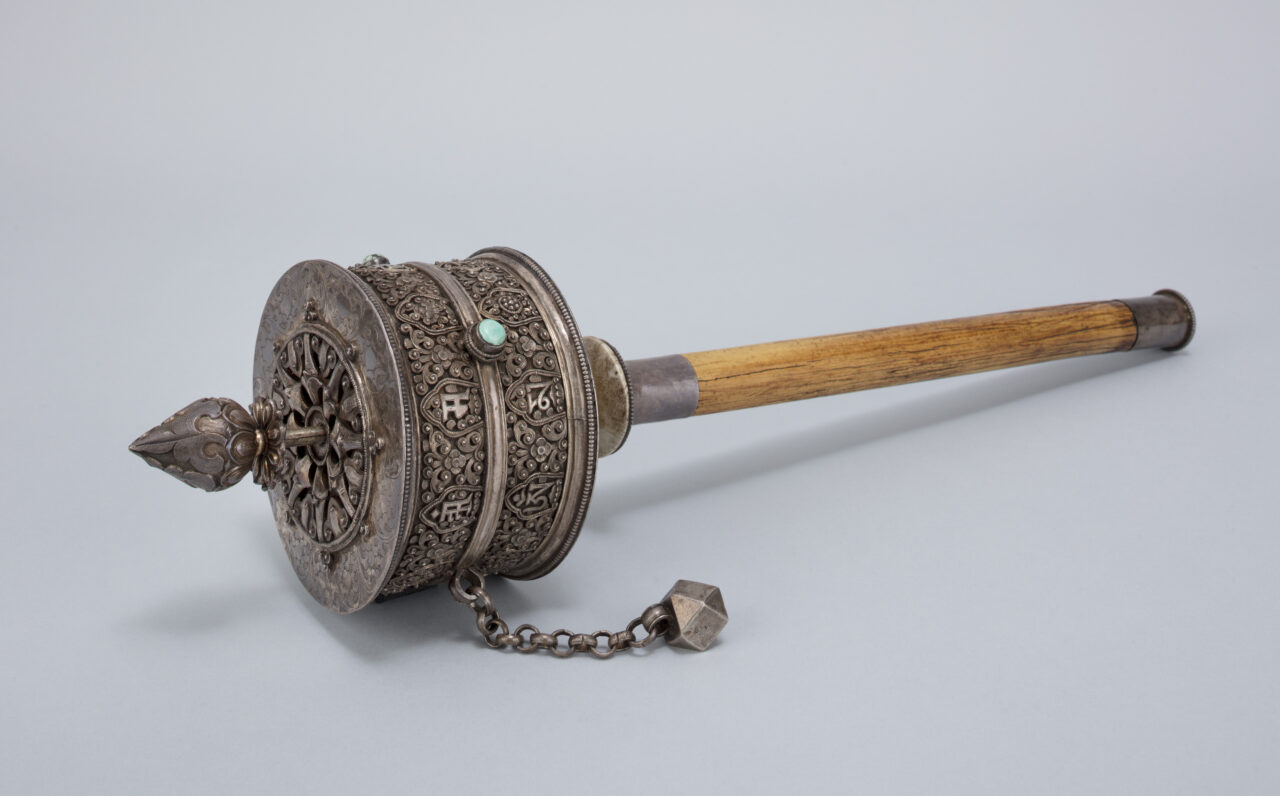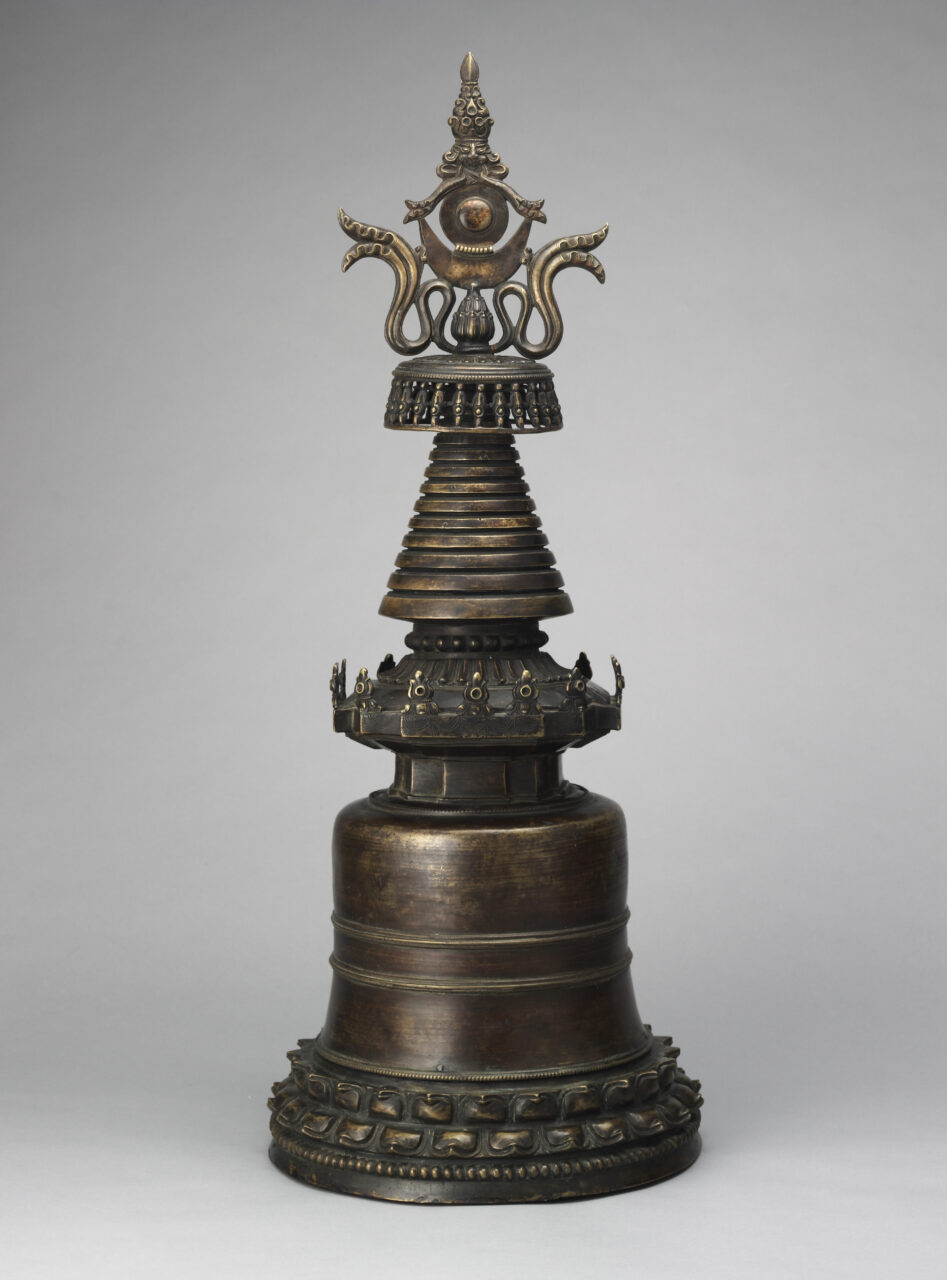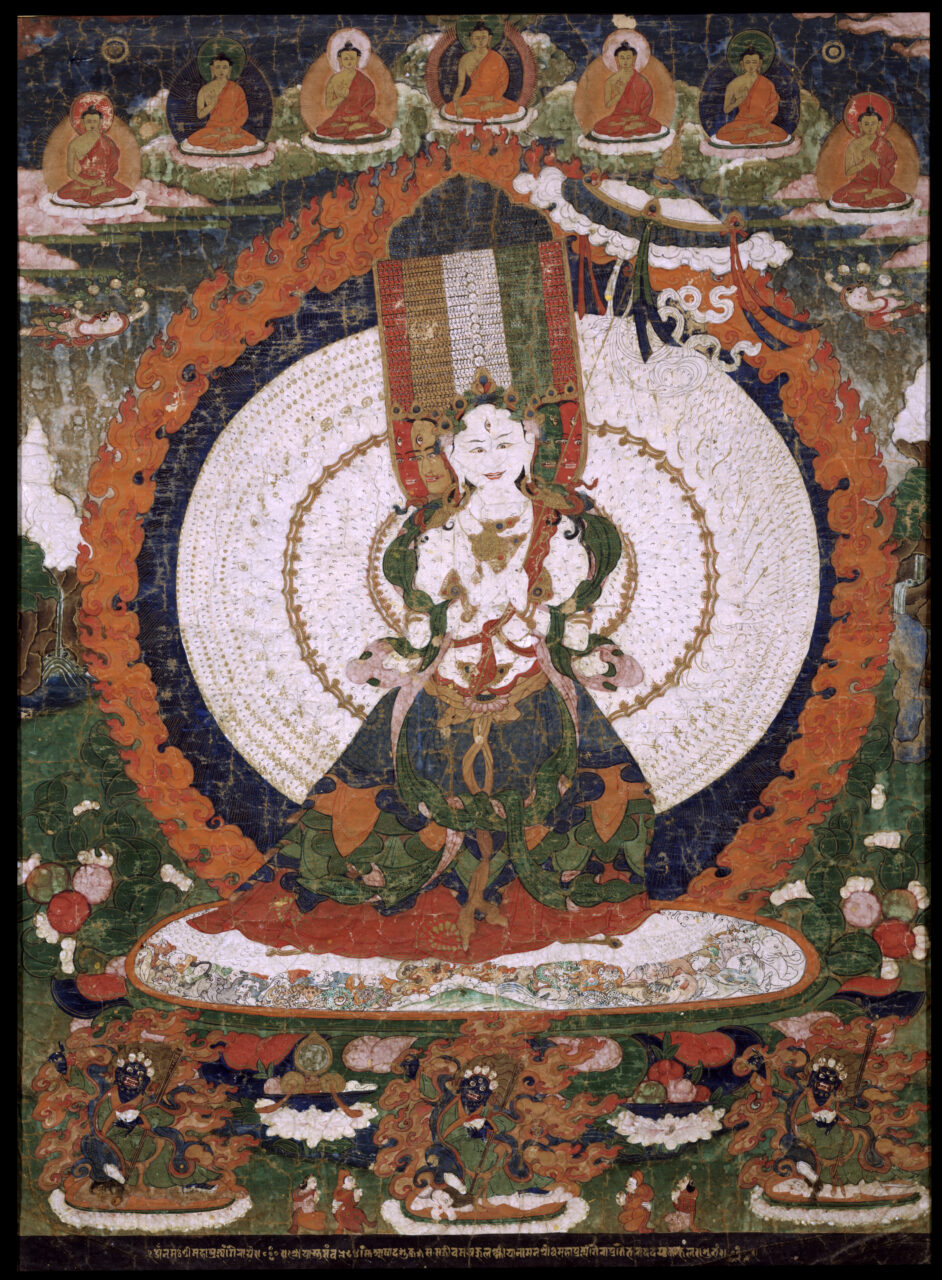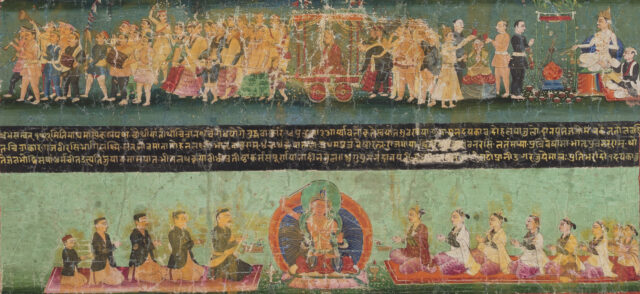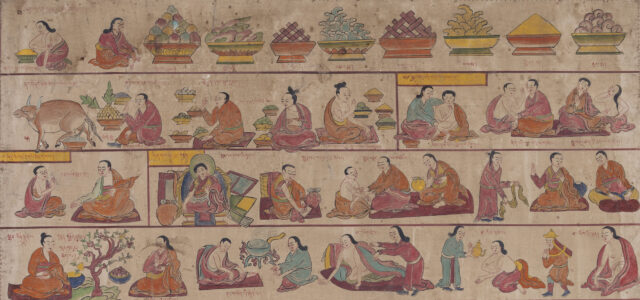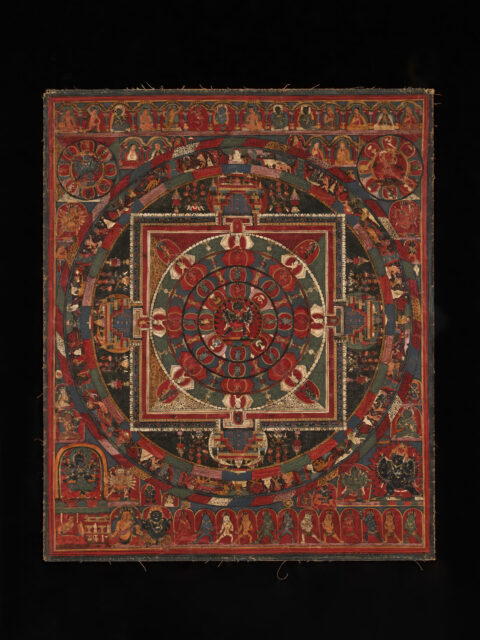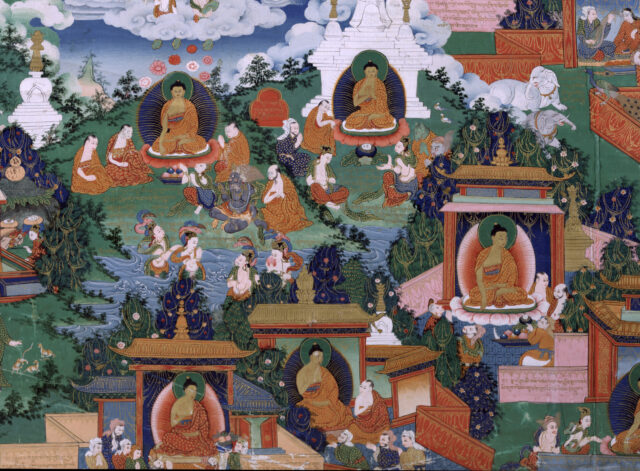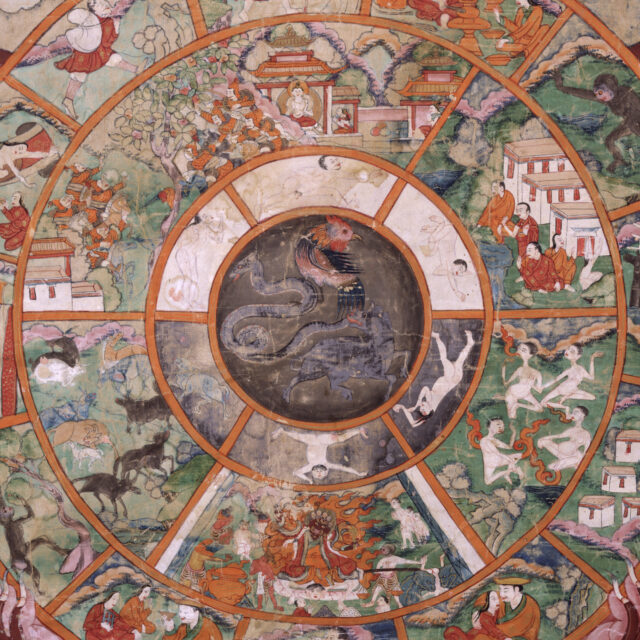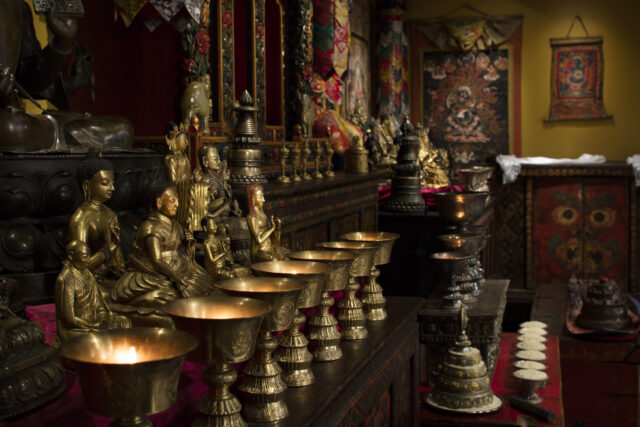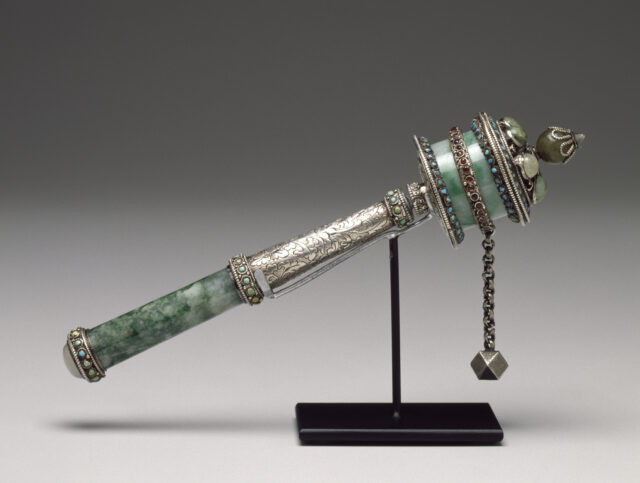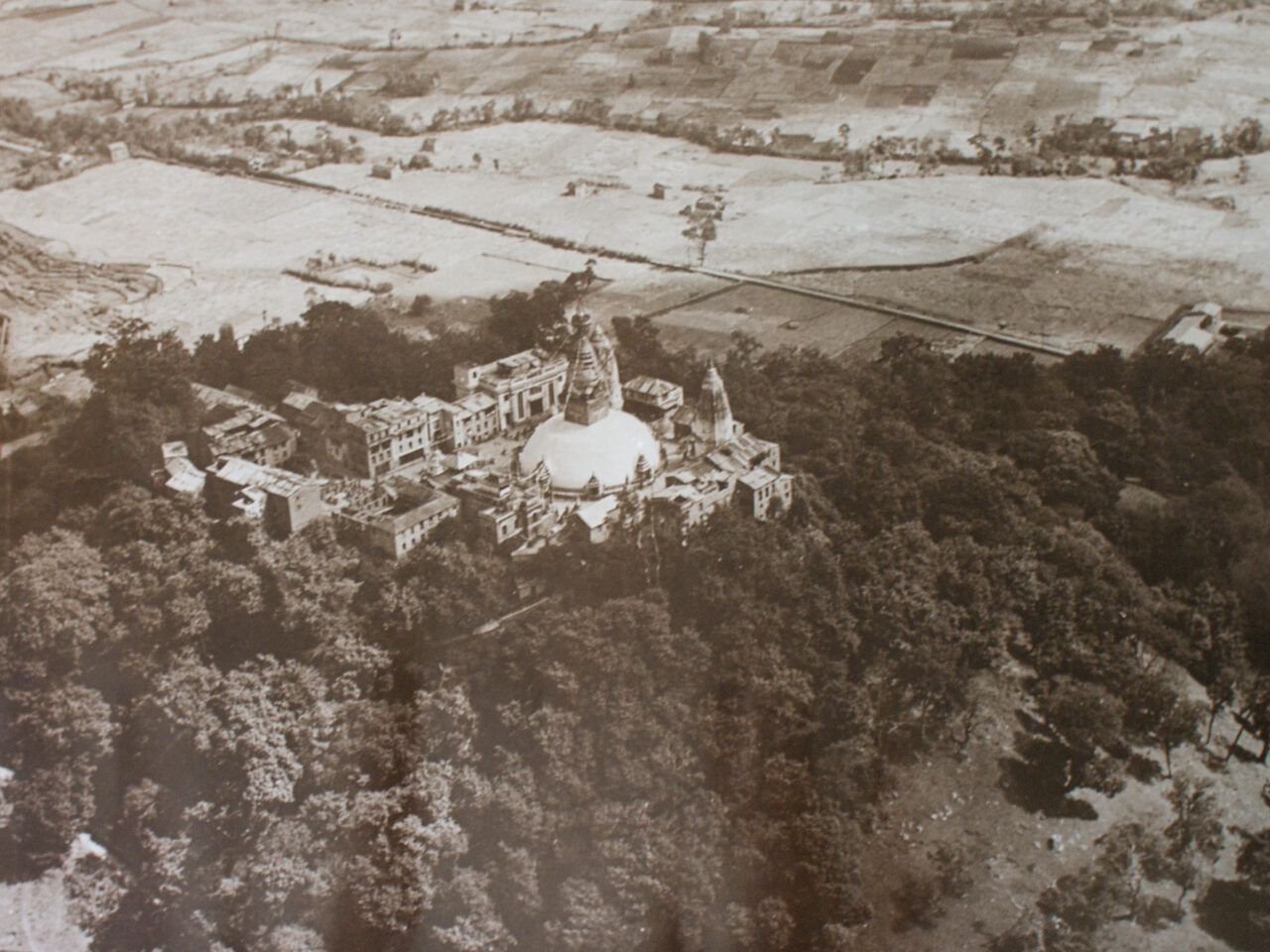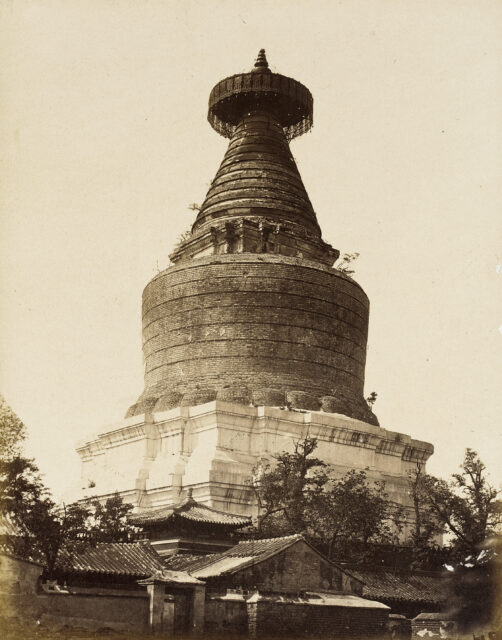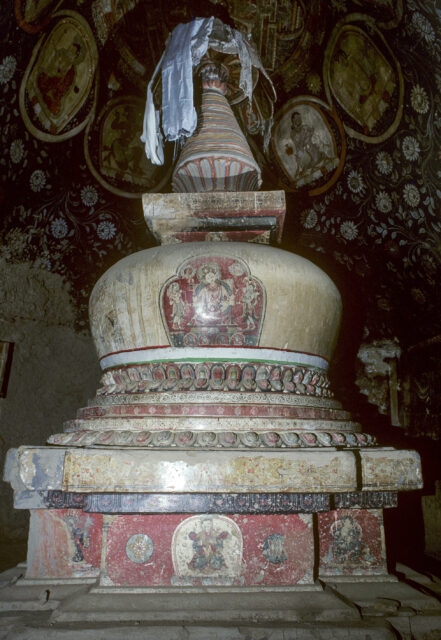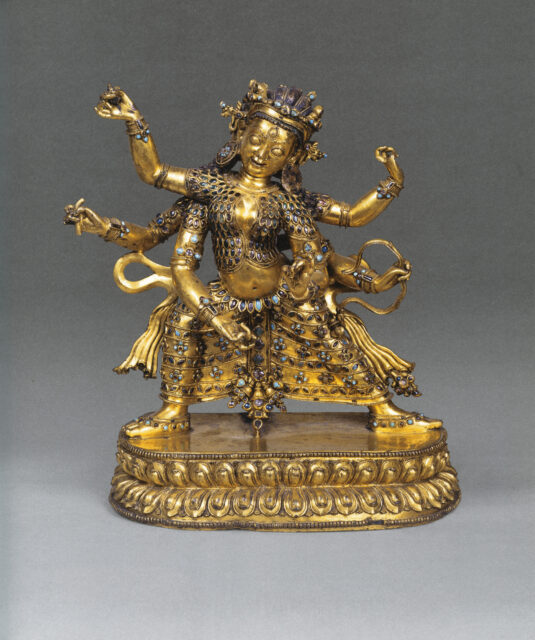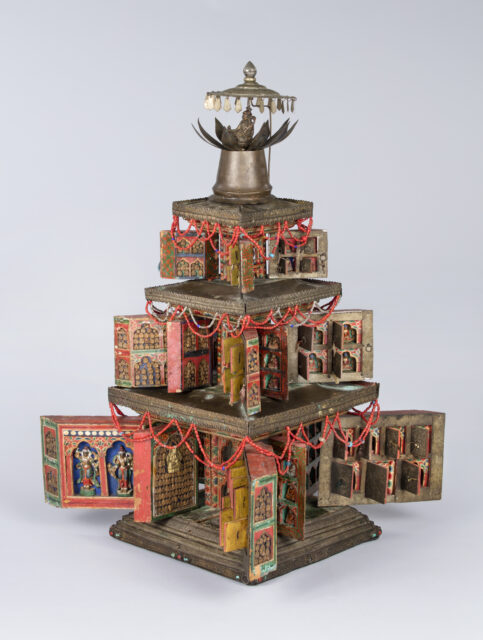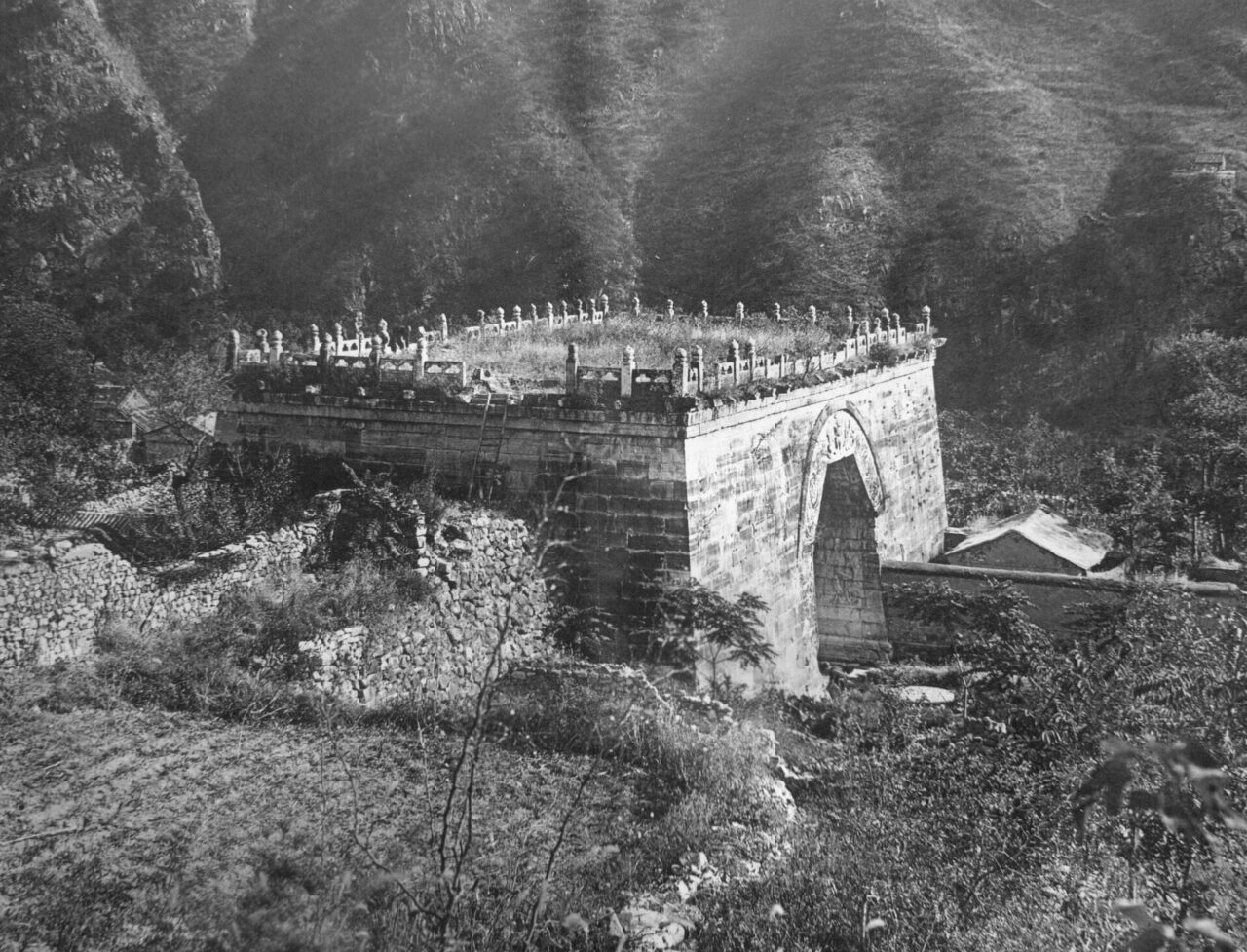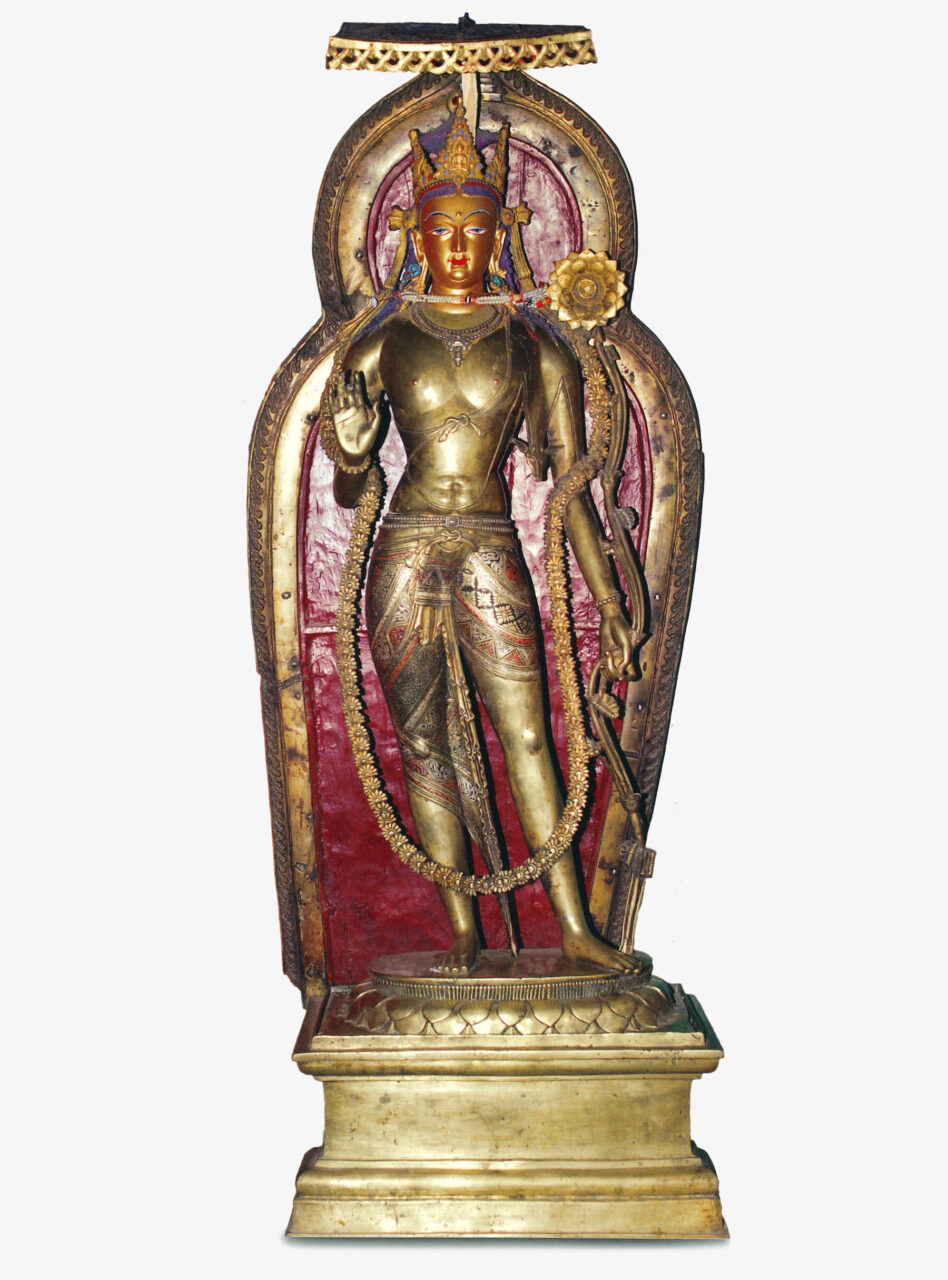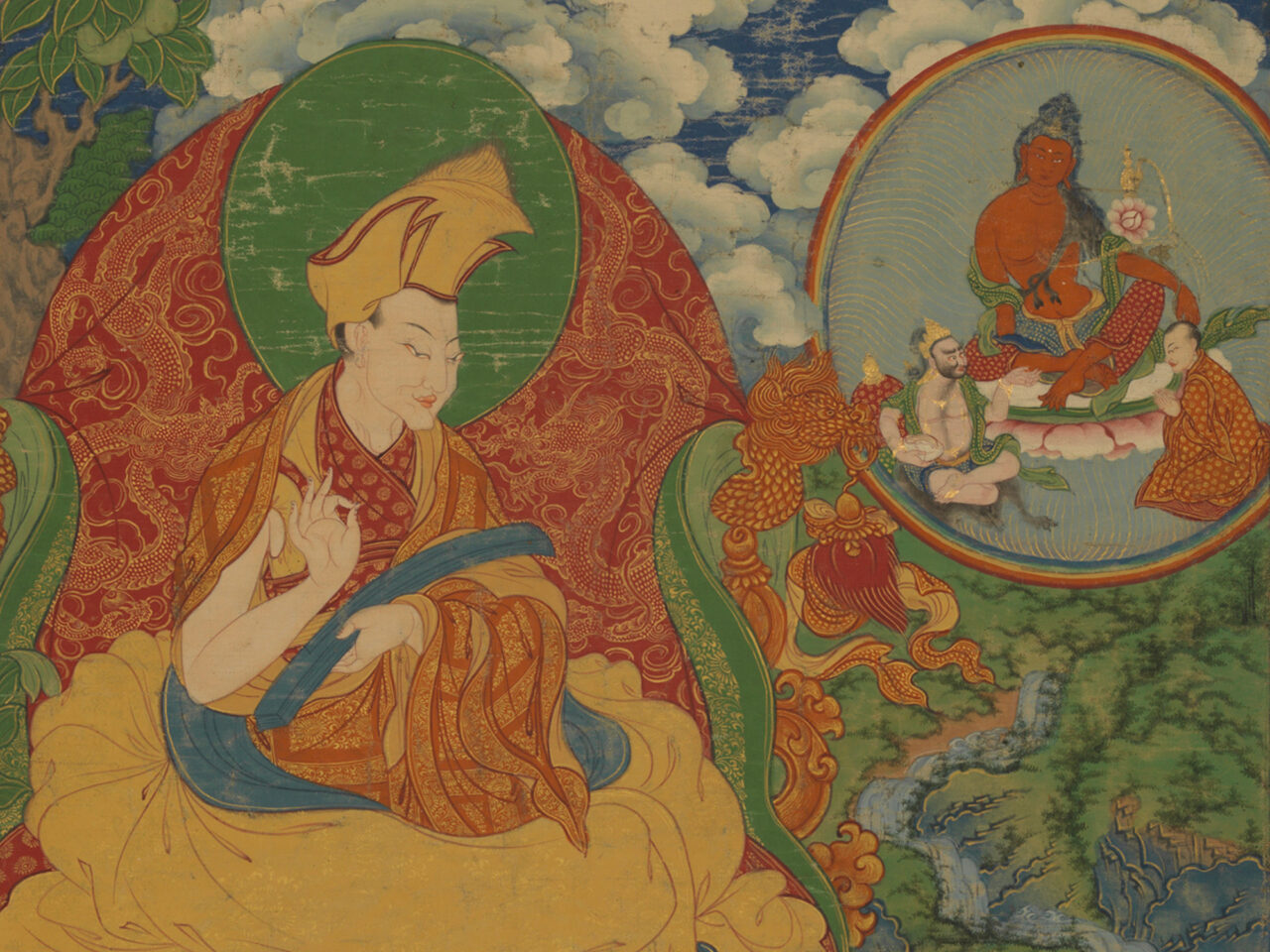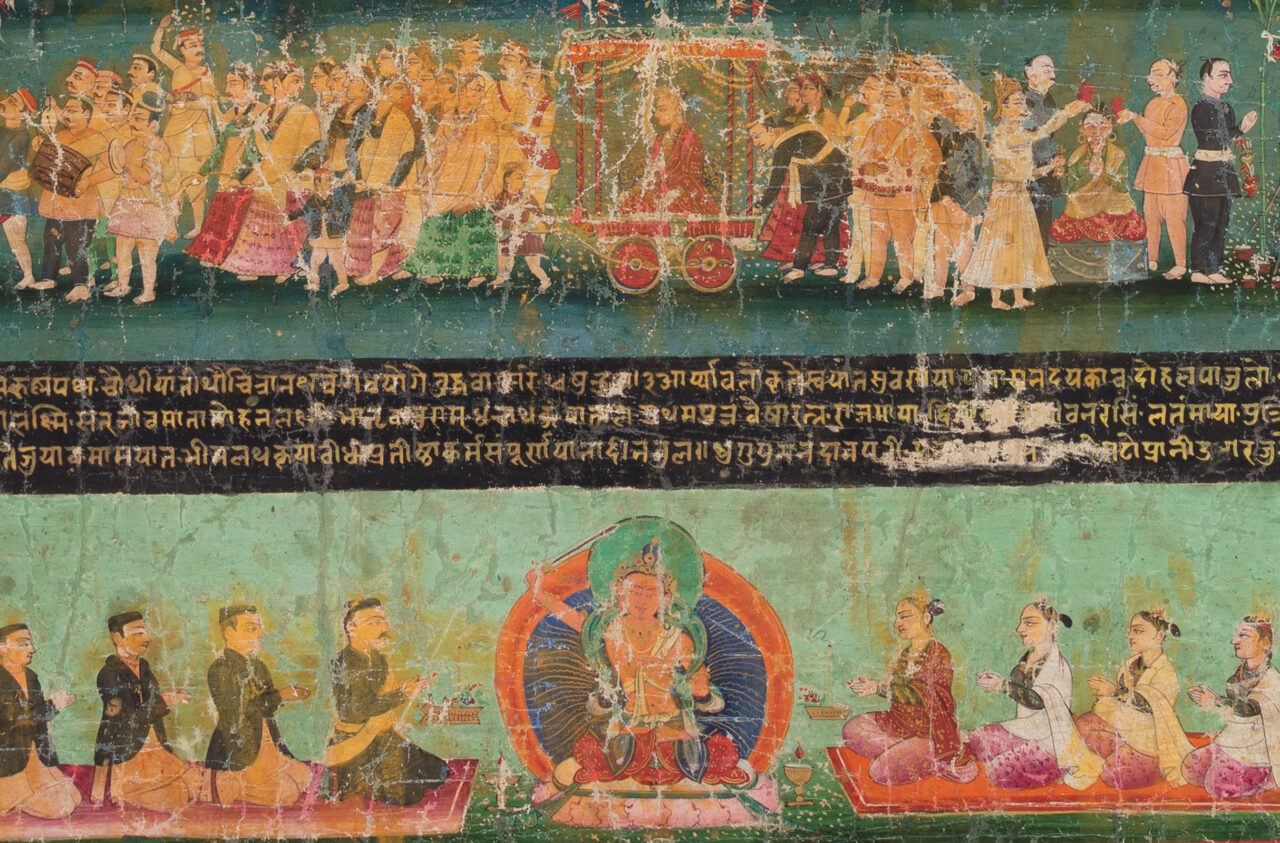In Himalayan cultures religious merit is the overarching reason for creating, commissioning, dedicating, and using religious works of art. Tied closely to the concept of karma, merit is an investment in the future that can bring about results in this lifetime or future ones.
The creation of religious objects, including paintings and sculptures, is a meritorious activity dedicated to the benefit of all. Sometimes paintings are commissioned and dedicated to ensure a fortunate rebirth for deceased loved ones; other times they are intended to increase the odds of a living person leading a long life free of sickness and obstacles. Merit is also accumulated just by looking at sacred objects and praying to the deity or buddha represented.
In daily life ritual objects called prayer wheels are used for the “virtual” recitation of invocations (mantras). These objects range in size from handheld to giant. The act of rotating them is said to equal the reading of a mantra, allowing practitioners to accumulate thousands of recitations. Turning prayer wheels and walking around symbolic representations of the Buddha’s mind (stupas) are the most common Buddhist practices believed to bring great merit.
